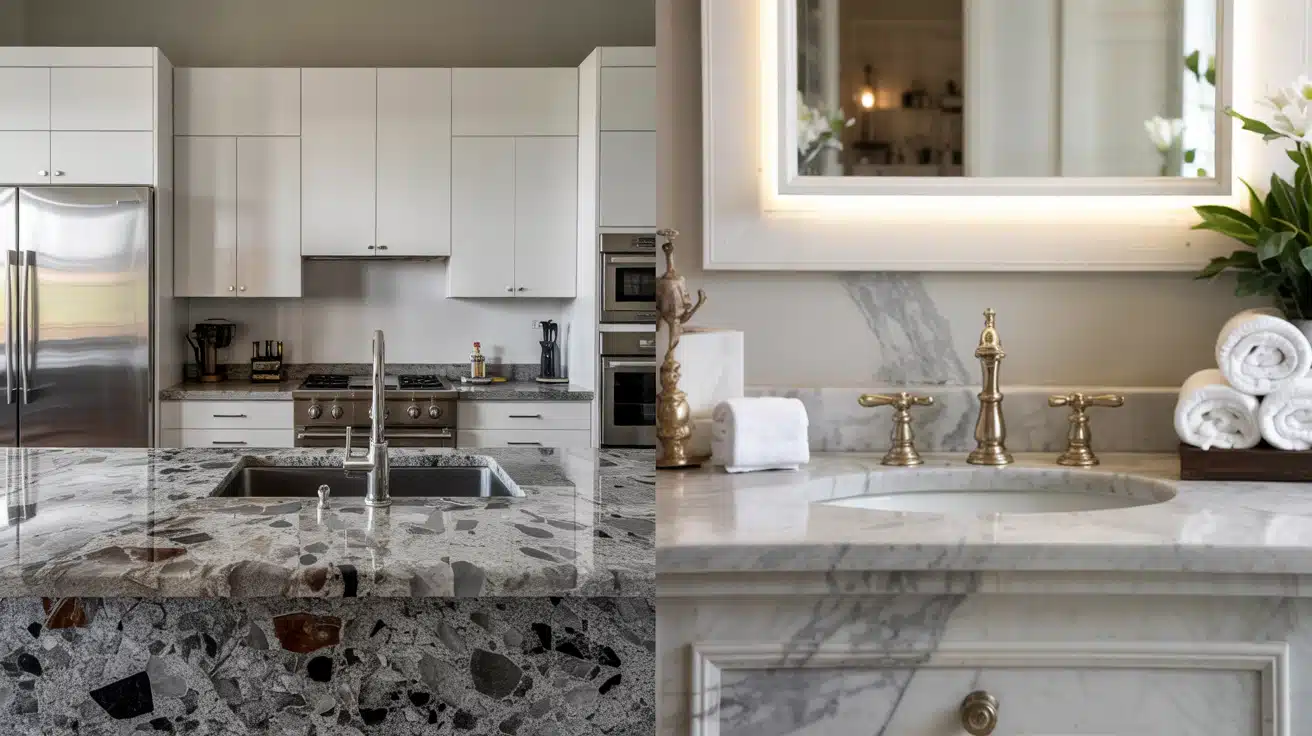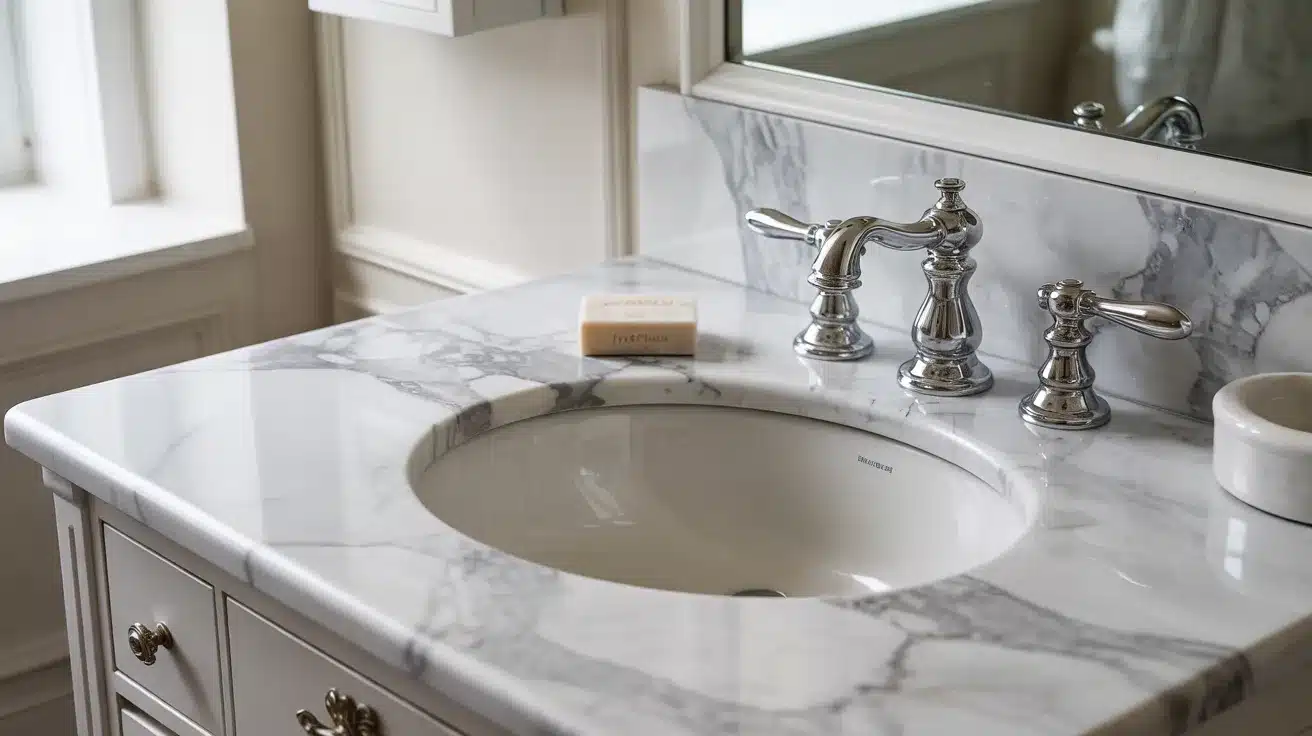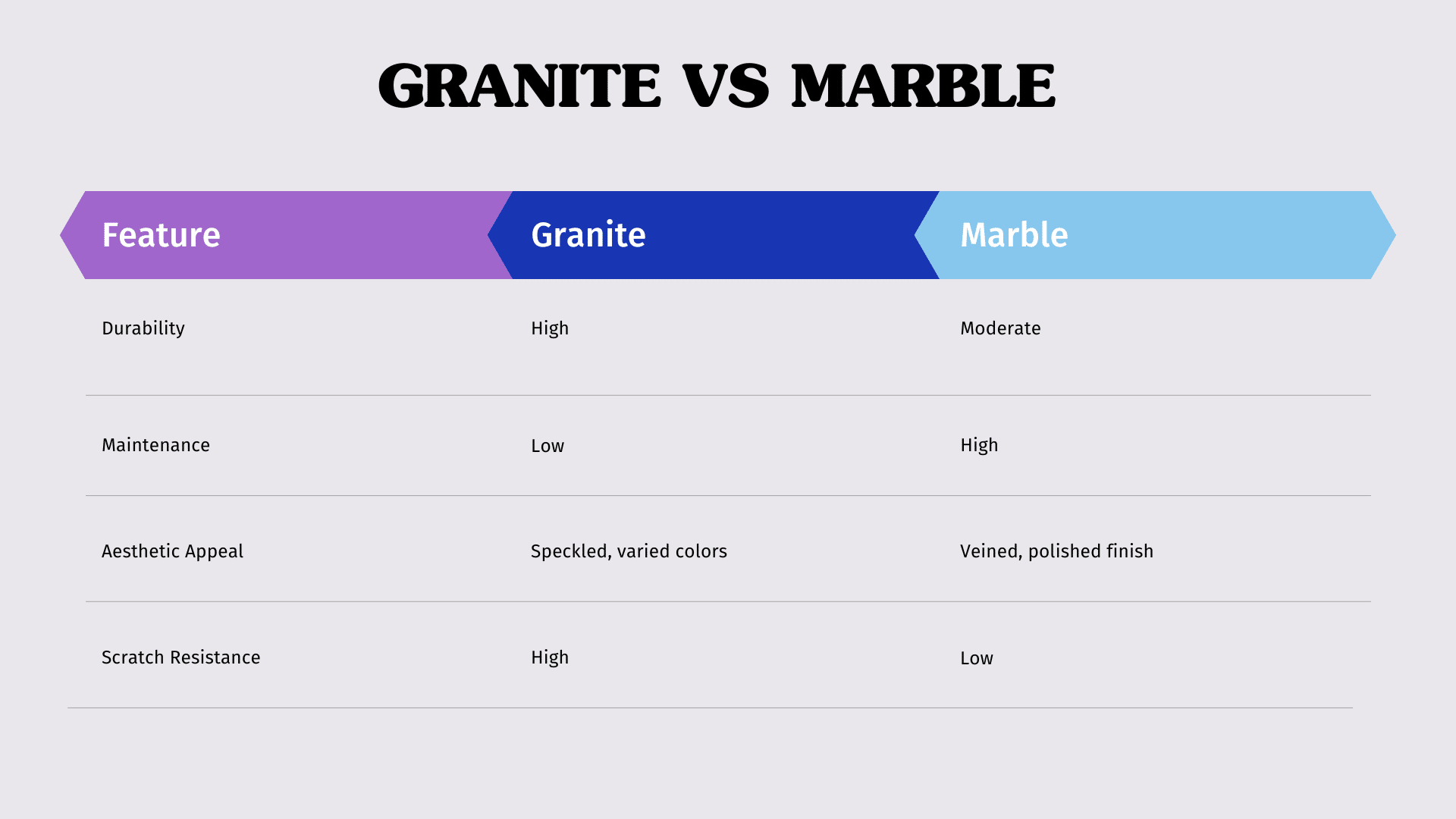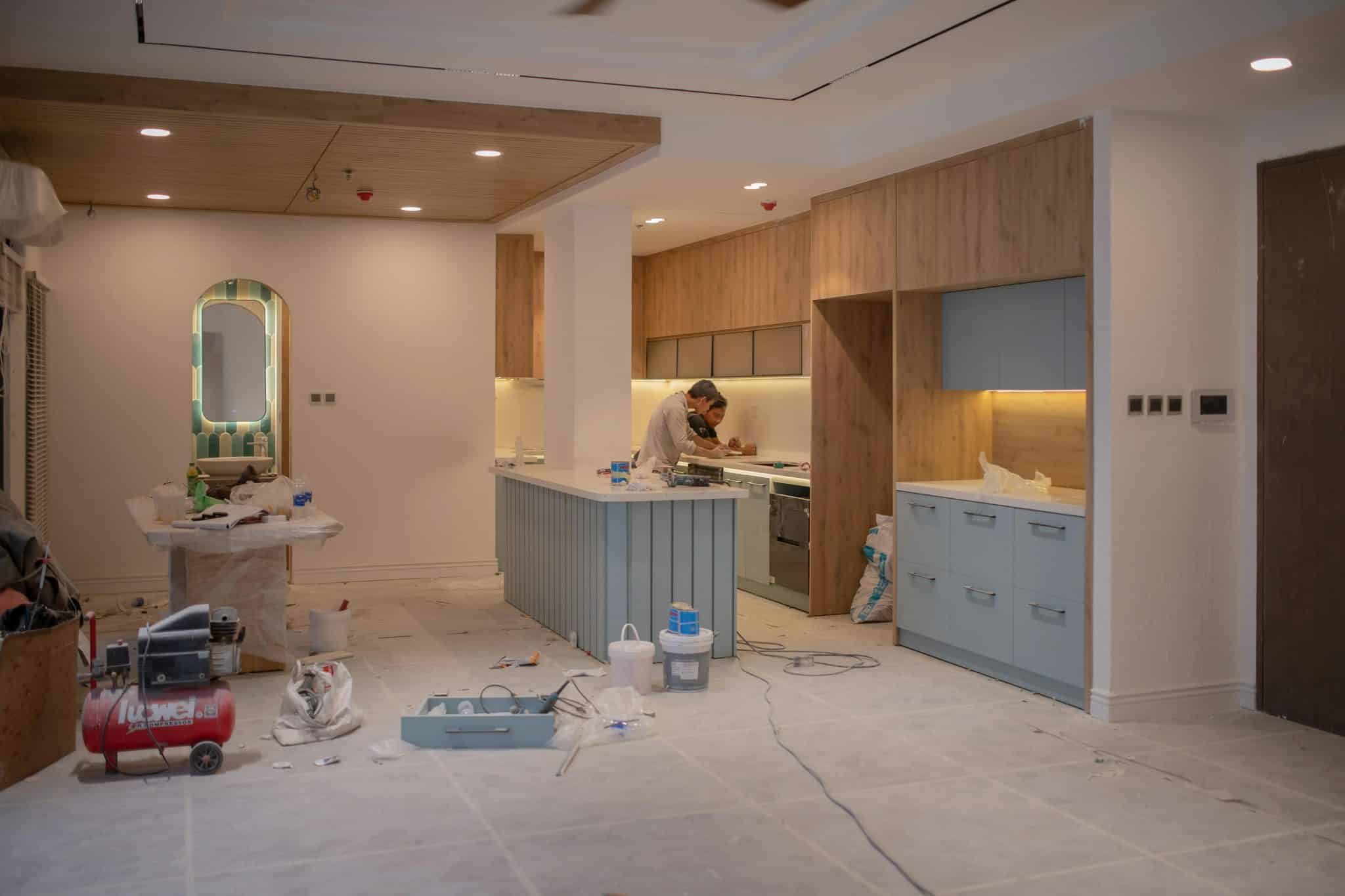Standing in the stone showroom, staring at rows of beautiful slabs, I felt completely overwhelmed. Granite here, marble there, and they all looked stunning under those bright lights.
But which one would actually work in my real kitchen with real spills and real life happening?
What most people don’t realize is that granite and marble aren’t just different colors of the same material. They’re completely different rocks with unique personalities.
One thrives in busy kitchens while the other demands gentle care. One shrugs off wine spills while the other shows every drop.
I’ve spent years working with both materials, and I’m going to share the real differences that matter for your daily life. By the end of this comparison, you’ll know exactly which stone belongs in your space and why.
Granite: Built for Durability
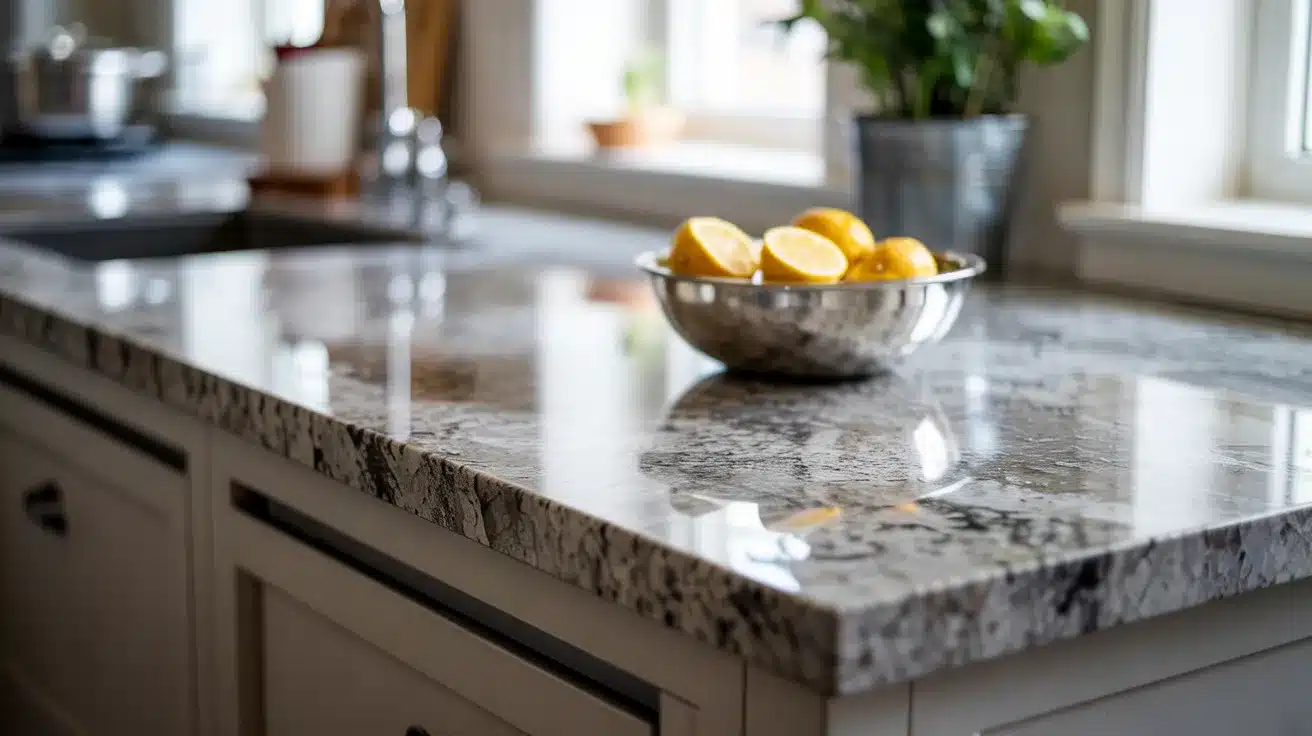
Granite is an igneous rock that forms when molten magma cools and solidifies deep within the Earth’s crust. This natural process creates a tough material that resists damage from daily use.
The rock has a speckled, granular appearance and numerous color variations, making it perfect for high-traffic surfaces like kitchen countertops and commercial flooring.
Features of Granite
- Made from natural igneous rock with exceptional hardness
- Available in hundreds of color combinations and patterns
- Requires minimal daily upkeep and cleaning
- Resists heat damage from hot pots and pans
- Stands up well to scratches and daily wear
- A non-porous surface, when properly sealed
- Maintains its appearance for decades
Granite is Ideal For
- Busy kitchen countertops with heavy use
- Families with children and active lifestyles
- Homeowners who prefer low-maintenance surfaces
- Areas exposed to heat and potential scratches
- People who want long-term value
- Commercial spaces requiring durability
How to Take Care of Granite?
- Clean with mild soap and water, dry with a microfiber cloth
- Wipe spills immediately and use cutting boards
- Apply sealer annually when water stops beading
- Use stone-specific cleaners for deep cleaning
- Avoid abrasive scrubbers that dull the surface
- Polish occasionally for extra shine
- Repair chips promptly to prevent spreading
Pros and Cons Of Granite
| Pros | Cons |
|---|---|
| Extremely durable | Heavyweight |
| Heat resistant | Needs periodic sealing |
| Scratch resistant | Professional installation required |
| Easy to clean | Higher upfront cost |
| Many color options | Hard to repair the damage |
| Adds home value | Can’t be modified easily |
Marble: Classic Elegance with Timeless Beauty
Marble belongs to the metamorphic rock family, created when limestone undergoes intense heat and pressure over thousands of years. This process produces a smooth, polished surface marked by distinctive natural veining patterns.
The stone’s refined appearance has made it a classic choice for luxury applications in both residential and commercial settings.
Features of Marble
- Formed from metamorphic limestone with a smooth texture
- Shows unique veining patterns in each slab
- Offers classic white and cream color options
- Provides a naturally cool surface temperature
- Polishes to a high-gloss finish
- Adds significant value to home interiors
- Creates a timeless visual appeal
Marble is Ideal For
- Formal dining rooms and guest bathrooms
- Homeowners who prioritize visual impact
- Areas with lighter, occasional use
- Traditional or luxury interior designs
- People are willing to invest in regular care
- Spaces where appearance matters most
How to Take Care of Marble?
- Use only pH-neutral cleaners, never acidic products
- Wipe spills instantly, especially acids and wine
- Always use coasters and trivets for protection
- Seal more frequently than granite due to its porosity
- Buff regularly with a soft cloth for luster
- Address etching immediately with restoration products
- Consider professional polishing for heavy-use areas
Pros and Cons of Marble
| Pros | Cons |
|---|---|
| Timeless beauty | Stains easily |
| Cool surface for baking | Scratches more easily |
| Unique natural patterns | High maintenance |
| High-gloss finish | Professional installation needed |
| Increases home value | Etches from acids |
| Classic appeal | Expensive quality slabs |
Key Differences Between Granite and Marble
While both are natural stones, granite and marble come from different geological processes that affect their performance.
Granite forms from cooled magma, creating a dense and durable surface, while marble develops from limestone under pressure, resulting in a softer material.
These differences impact how they handle daily use and maintenance requirements.
How to Choose between Granite and Marble?
The right choice between granite and marble depends on your specific needs, lifestyle, and priorities. Consider your daily habits, maintenance preferences, and design goals to find the stone that fits your home perfectly.
Durability Needs
1. Which is your priority?
a) Long-term durability and low maintenance
b) Visual impact and classic beauty
c) Balance of both durability and appearance
d) Cost-effectiveness over time
2. How will you use the surface?
a) Heavy daily cooking and food preparation
b) Light use in formal or guest areas
c) Mixed use for entertaining and daily life
d) Primarily for visual appeal
Maintenance Preferences
3. How much time can you spend on upkeep?
a) Minimal – just daily cleaning
b) Willing to invest in regular care and maintenance
c) Occasional deep cleaning and sealing
d) Professional maintenance when needed
4. What are your thoughts on staining and etching?
a) Want a surface that resists most damage
b) Don’t mind being careful with acidic foods and drinks
c) Concerned but willing to learn proper care
d) Prefer worry-free daily use
Visual Appeal and Design Style
5. What style appeals to you most?
a) Modern, contemporary with varied patterns
b) Classic, traditional with flowing veins
c) Transitional style that works with various decors
d) Unique statement piece as focal point
6. Which finish do you prefer?
a) Consistent, speckled appearance
b) Polished, reflective surface with natural veining
c) Honed or matte finish
d) Whatever requires the least maintenance
Budget Considerations
10. What is your budget range, including installation costs?
a) Moderate budget, looking for best value
b) Higher budget for premium materials
c) Need to balance cost with quality
d) Willing to invest in long-term satisfaction
11. How long do you plan to stay in your home?
a) 10+ years, want long-term investment
b) 5-10 years, want to add value
c) Less than 5 years, moderate investment
d) Forever home, want the best option
Results:
If you answered mostly A’s and C’s, Granite is likely your best choice due to its durability and lower maintenance requirements.
If you answered mostly Bs and Ds, Marble may suit you better if you prioritize beauty and don’t mind extra care.
If you have mixed answers, consider your top priorities: daily use favors granite, while formal spaces might benefit from marble’s visual impact.
Granite vs Marble: Cost Comparison
| Cost Factor | Granite | Marble |
|---|---|---|
| Material Cost (per sq ft) | $40-$100 | $60-$150 |
| Installation Cost | $35-$85 per sq ft | $40-$100 per sq ft |
| Total Cost (installed) | $75-$185 per sq ft | $100-$250 per sq ft |
| Budget Options | $40-$60 per sq ft | $60-$80 per sq ft |
| Premium Options | $80-$100+ per sq ft | $120-$200+ per sq ft |
| Maintenance Cost (annual) | $50-$150 | $100-$300 |
| Resale Value | Good | Excellent |
Note: Costs vary by location, slab thickness, and installation complexity. Labor costs represent 30-50% of total project expense.
Conclusion
The granite vs marble decision ultimately comes down to matching stone characteristics with your real-world needs.
Granite delivers unmatched durability for busy households, while marble provides unparalleled beauty for those willing to invest in proper care.
Your choice should reflect your priorities: daily functionality or visual impact. Consider how much time you can realistically spend on maintenance, your budget for both initial costs and long-term care, and how long you plan to stay in your current home.
Don’t rush this decision. Visit multiple suppliers, request samples, and talk to installers about your specific situation. The right stone will enhance your daily life while adding lasting value to your home.
Take time to choose wisely – you’ll be living with this decision for many years.
Frequently Asked Questions
Why Is Granite Less Popular?
Granite isn’t less popular, it’s actually widely chosen for kitchens. However, some prefer marble’s luxury appearance or newer materials like quartz for different aesthetic preferences.
Is Granite or Marble More Expensive?
Marble typically costs more than granite due to rarity and processing requirements. High-end granite can match marble prices, but standard granite remains more budget-friendly overall.
How Can I Tell the Difference Between Marble and Granite?
Granite shows speckled patterns with mixed colors, while marble displays flowing veins. Granite feels rougher to touch; marble has a smoother, cooler surface when polished.

